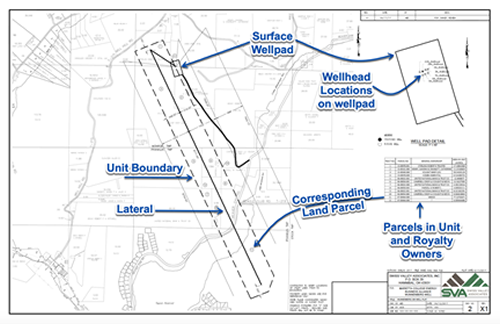
LEASING
Before any drilling can occur, the operating company (the one that will own the well) must first lease the land. Landmen within the Land Department of the operating company are in charge of this process. Perhaps this process is best summarized by Court House Direct: "Landman serve as the oil and gas company’s public contact. They scope out potential drill sites, negotiate deals, and manage legal issues and regulatory permits or other paperwork."
The process begins with the company determining what geographic areas they are interested in. This will largely depend on what formation they wish to drill into. The land will need to overlay their formation of interest. The company might then determine how many wells they want to drill and where. To drill a well, the mineral rights for that land parcel must be obtained. If the well is horizontal, all of the mineral rights must be leased (or purchased) within a particular distance (set by the state) from the intended well path. Furthermore, surface rights will need to be obtained from the owner of the surface location where the wellpad will be built. It is the landman's job to identify all of the necessary surface and mineral right owners, as well as to assemble enough acreage to complete a full "unit," in which the well can be drilled. A "unit" is essentially comprised of all the land parcels and mineral right owners who are within a set distance from the well. Those within the "unit" will receive royalties if the well is drilled and brought into production. These owners will then be contacted to lease their mineral rights to the operating company so that the well can be drilled.
Complex maps called "plat maps" are then produced that show the intended well's direction, surface location, property owners, mineral right owners, unit boundaries, etc. Check out the sample image provided below.

Figure 1. Plat map obtained from Energy Business Alliance (EBA), a student organization at Marietta College.
Plat map Created by Swiss Valley Associates.
Leases are quite complex documents that are the binding legal agreement between the operating company and the owner of the mineral rights. According to Court House Direct, "The lease will contain the following information:
Once these leases are written, the company will then go about determining which lease to develop (or drill) first. As you will learn in the next lesson, this is a fairly complex decision as well.
https://info.courthousedirect.com/blog/oil-and-gas-leasing-everything-landmen-need-to-know